Mist nets: Invisible and deadly traps for wildlife
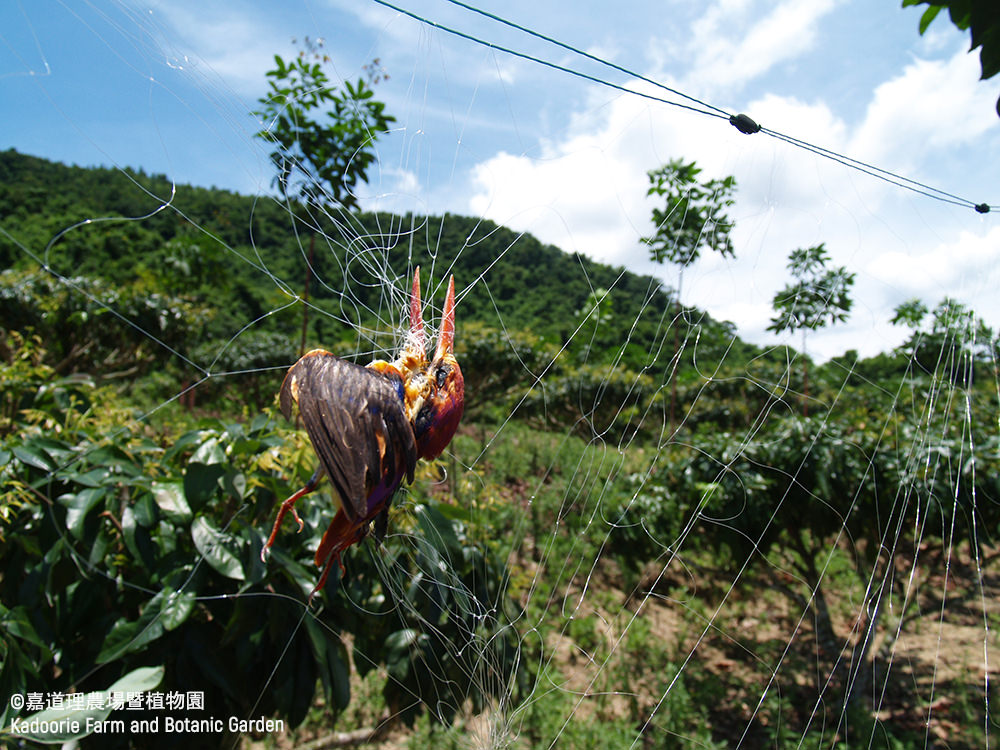
An Oriental Dwarf Kingfisher fell victim to near invisible mist nets
Have you ever walked into a shop window because you are so focused with the display items that you couldn’t see the transparent wall?
This happens to wild animals too when they smell the sweetness of ripe plums or see the irresistible orange colour of persimmons. But, unlike us, they don’t come out with a minor concussion and become a laughing stock to their friends. Their mistake could cost their lives.
Conflict between farmers and wildlife
This bat met its end at the hand of mist nets
For fruit-eating bats and birds, orchards are a place to find an easy meal. For seed-eaters, ripen paddy or corn fields are synonymous with buffets. But for farmers, their crops are their livelihood. If you stand in their shoes and watch your blood and sweat being robbed, it’s understandable why they see these animals as their arch nemesis.
One of the commonest methods used to prevent animal access to crops is by putting up mist nets over fruit trees and paddy fields. They look just like volleyball nets, except that they have filaments so fine that they appear invisible to the naked eye from a distance. Unwitting animals don’t discover the danger until it’s too late. As they hit the net, they often struggle to free themselves but only to get even more deeply and hopelessly entangled, and are left to die by dehydration, stress, starvation and/or predation.
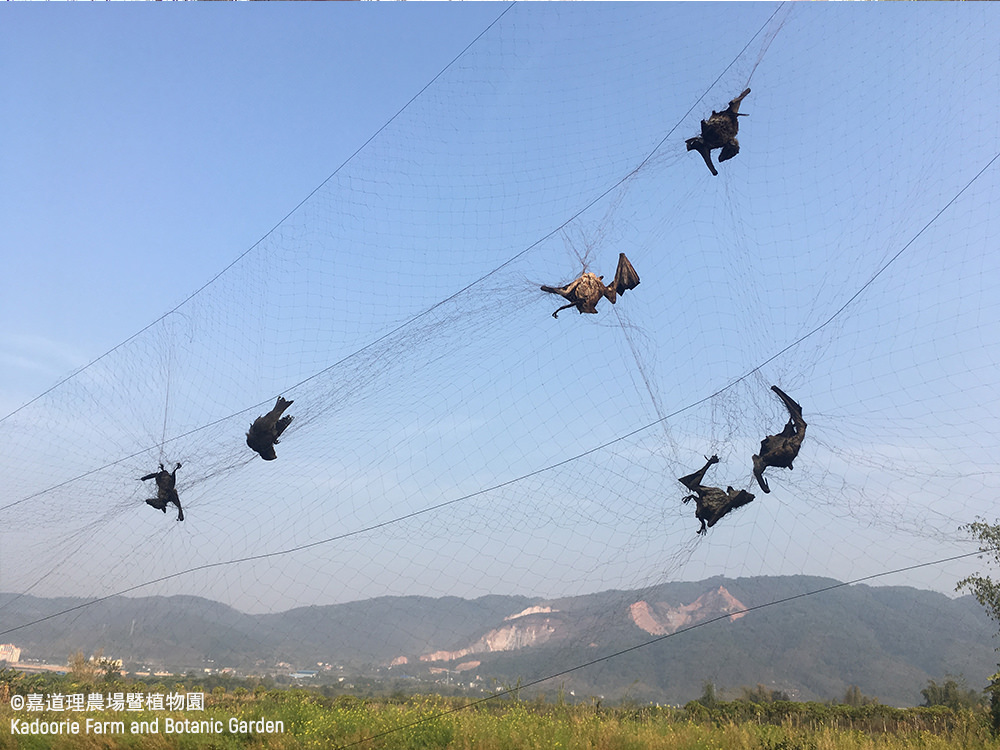
Bat carcasses hanging from mist nets on the fringe of farms
If you walk pass farms, you could often find dried up bat and bird carcasses hanging from the nets. They act as a reminder of the daily conflicts between humans and animals.
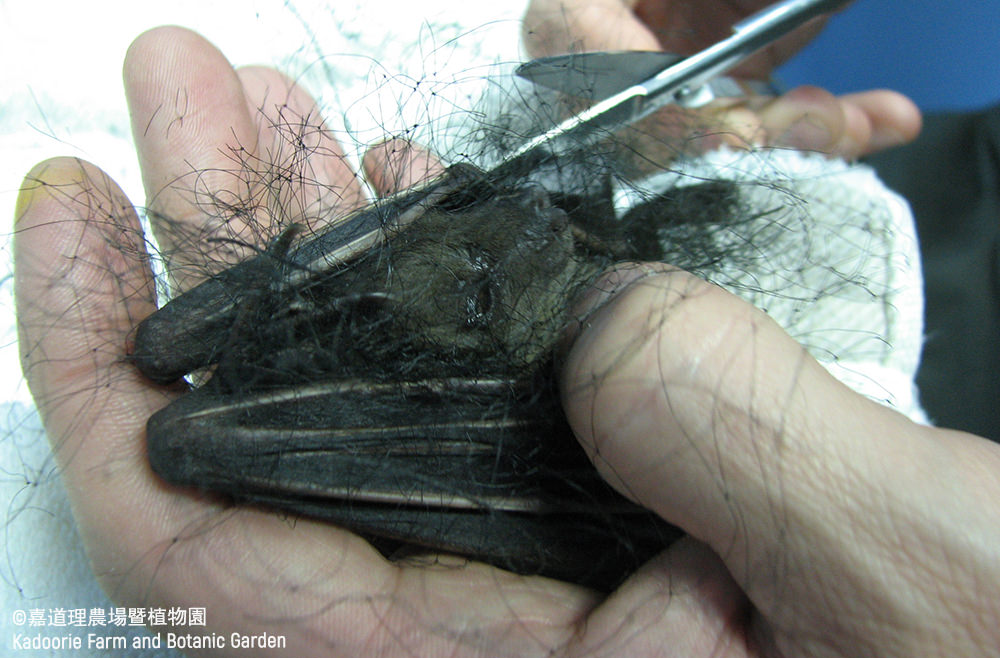
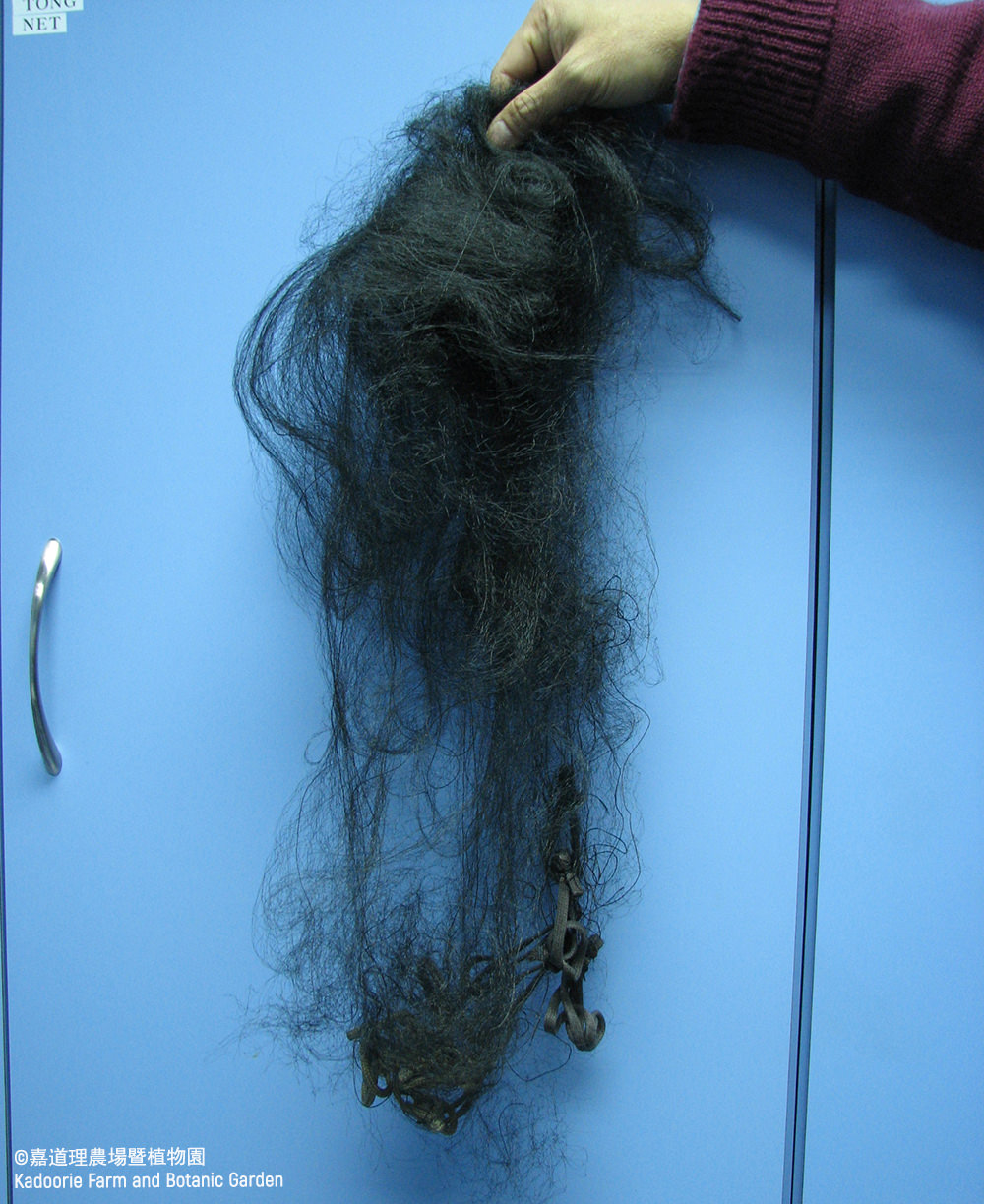 KFBG’s Wild Animal Rescue Centre frees a Short-nosed Fruit Bat from the tangles of a mist net
KFBG’s Wild Animal Rescue Centre frees a Short-nosed Fruit Bat from the tangles of a mist net
Coexisting with wildlife

A Lesser Yellownape entrapped in a mist net in Cambodia
We witness this “battle” between farmers and wildlife repeatedly across China including Hong Kong when we carry out fieldwork. It is the same story across the world, even in more eco-conscious countries like Japan and Australia. Fruit growers are even known to shoot fruit thieves. It is not news, but the conflict persists.
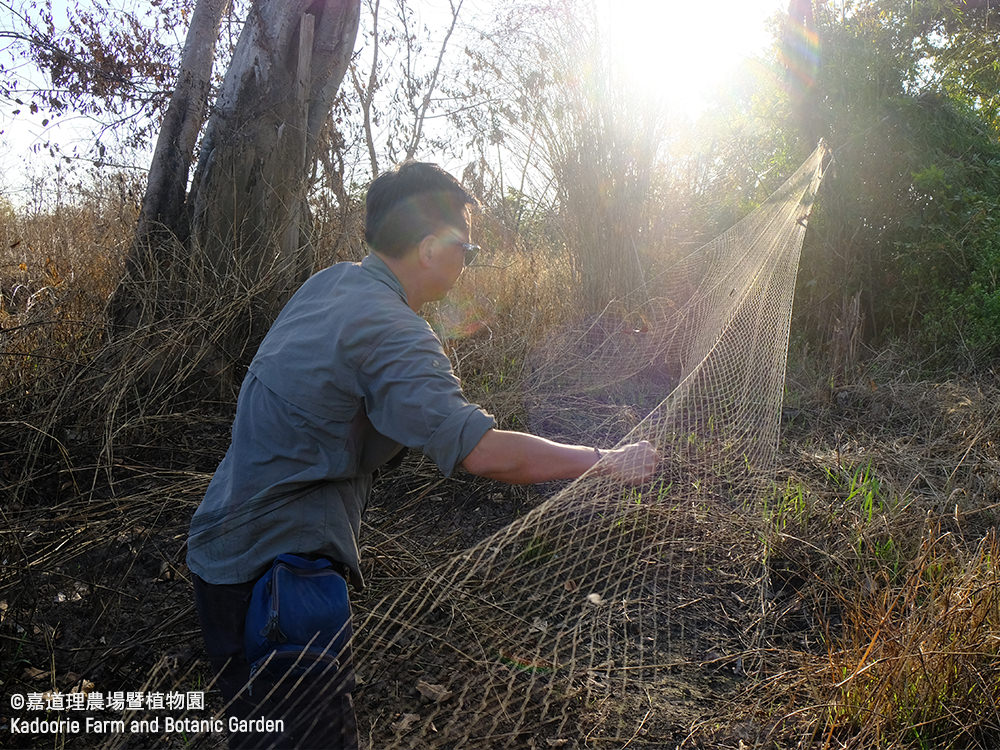
The Kadoorie Conservation China team clears a mist net
We conducted a literature review to identify tried and tested methods to mitigate the conflict. Below is a list of effective measures suggested by studies:
- Cover the whole farmland with fixed, bright-coloured nets that are detectable by animals and generally prevent entanglement;
- Net individual trees, or fruit panicles, using small net bags;
- Spray non-toxic but strong tasting/smelling agents onto crops;
- Prune trees regularly to maintain tree height since some bats like to forage on tall trees (Yield might drop initially but productivity will increase later on);
- Broadcast the sound of wounded animals;
- Harvest crops before they ripen to reduce their attractiveness to animals;
- Introduce less valuable or non-commercial crops that is more attractive to animals than the crop to be harvested. Before selecting a plant species as a decoy crop, the diets of the target pest animals should be established;
- Turn farms into eco-tourism sites for wildlife watching to generate supplementary income for lost harvest.
Some of the measures are costly in terms of financial and manpower input, and can only be realised when farmers or investors have high conservation awareness. Research is also needed to determine whether these measures work as well in China as they did abroad.
China is an agriculture powerhouse. We hope researchers can come up with a set of eco-friendly, cost-effective and practical solutions that benefits China’s farmland wildlife.
Reference
Aziz SA, Olival KJ, Bumrungsri S., Richards GC, Racey PA (2016) The Conflict Between Pteropodid Bats and Fruit Growers: Species, Legislation and Mitigation. In: Voigt C., Kingston T. (eds) Bats in the Anthropocene: Conservation of Bats in a Changing World. Springer, Cham
Aziz, SA, Clements, GR, Giam, X., Forget, PM, & Campos-Arceiz, A. (2017). Coexistence and Conflict between the Island Flying fox (Pteropus hypomelanus) and Humans on Tioman Island, Peninsular Malaysia. Human ecology: an interdisciplinary journal, 45(3), 377–389. doi:10.1007/s10745-017-9905-6
Oleksy, R., Ayady, C., Tatayah, V., Jones, C., Froidevaux, J., Racey, P., & Jones, G. (nd). The impact of the Endangered Mauritian flying fox Pteropus niger on commercial fruit farms and the efficacy of mitigation. Oryx, 1-8. doi:10.1017/S0030605318001138
Voigt, Christian & Kingston, Tigga. (2015). Bats in the Anthropocene. 10.1007/978-3-319-25220-9_1.a

